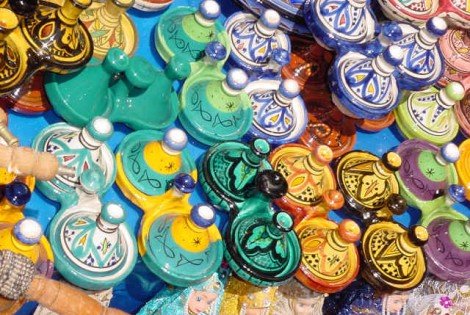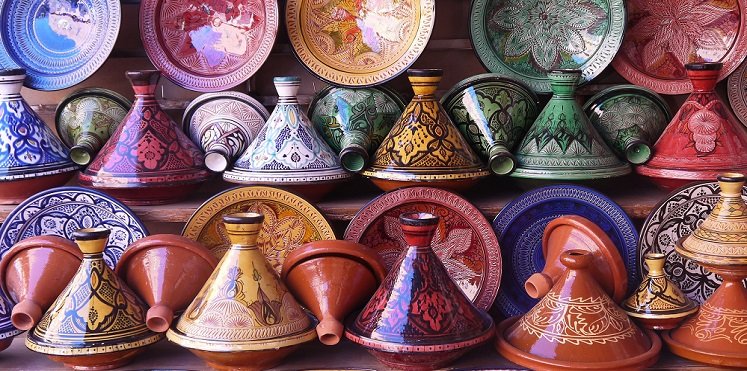The process is made after bringing clay or clay from the ceramic hills, which are initially huge stones to be placed in the laboratory where it is purified of limestone, and then directly transferred to the ponds and tanks in which it stays until the water absorbs well, then exposed to the sun from This process takes 24 hours, and then a drum and spindle are assembled and placed in a place to begin the process of kneading and spinning over a place called the "ball" through which similar shapes resembling sugar molds are made. On the upper cylinder forming the blade, and the learner moves the lollipop By means of his legs to start the cylinder in circulation and control at the same time hands in the shape above it, and that through these movements can make the shape to be adopted relying on this process on the water in the first place, and after the completion of the forms are made on the sun for drying to take its strength and hardness , And then entered into ovens for cooking under very high temperatures up to 1200 degrees for large kilns, and 900 degrees for the minor, and then to restore these forms of cracks that may be exposed to cooking, and then displayed on the "Zwaq" which is painted Using dyeing and brushes Where he writes some of the words and drawings that focus on the historical Islamic identity of Morocco over the past centuries, and vary these colors and bouquets between the gourds of donation and joy, cut and cut and the flag and the tics and materia ... Then followed by the process of polishing ceramic vessels.



These are awesome. Ive always wanted to have a go at doing something like this
Yes you right , :)